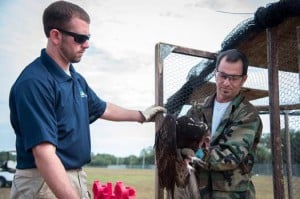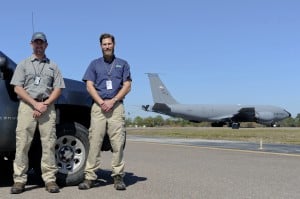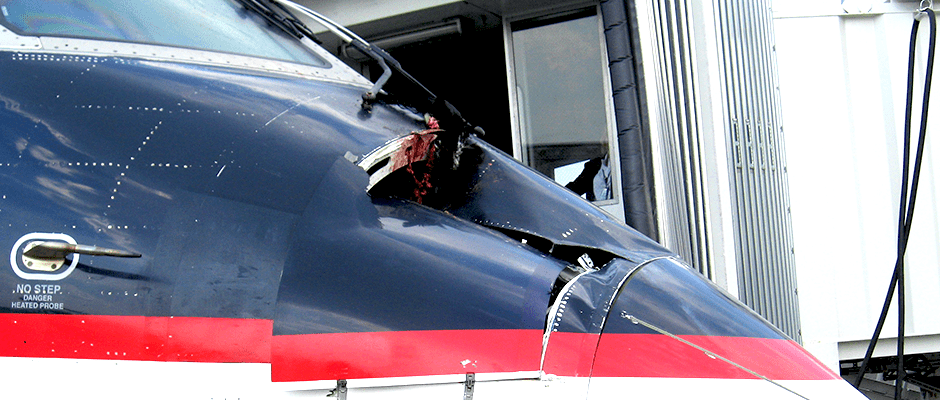Share this article
Tagging vultures for safety’s sake
Since 2001, MacDill Air Force Base has housed the 6th Air Mobility Wing, which provides air refueling and airlift operations in the southeastern United States and to military operations in Europe and Southwest Asia. It is home to 3,000 airmen, three C-37A’s and a dozen KC-135R’s, a Stratotanker with a maximum transfer fuel load of 200,000 pounds (90,719 kilograms). Safe take-offs are mission-critical and important for public and environmental safety.

Vulture trap-release program in December at the airbase.
In summer, MacDill also is home to as few as 50 black and turkey vultures. In winter, however, populations number 100 to 300 daily with as many as 1,000 passing through Tampa on busy migration days. Turkey vultures form the bulk of migrating vultures. They rank among the top five most hazardous avian species for aircraft and their population has doubled since 1990. Although not the most common strike, the birds’ size and flight characteristics mean vultures cause the most costly strikes to USAF aircraft. Half of all vulture strikes cause damage.
USDA Wildlife Services (WS) assists MacDill’s Bird/wildlife Aircraft Strike Hazard program fulltime, typically using pyrotechnics and effigies to disperse vultures, the airfield’s most prevalent hazard from November through March.

Ryan Lynch and Kory McLellan with a Stratotanker in the background.
With runways closed for construction, WS biologist Kory McLellan recognized a perfect time to gain information about how the vultures use the base and where they move during the year. He reached out to National Wildlife Research Center scientists, John Humphrey and Eric Tillman, at the WS Gainesville field station. Its vulture studies have been ongoing for almost 20 years involving hundreds of vultures from Texas to Virginia to Florida trapped, tagged, and released.
For two weeks in December, NWRC worked with WS specialist Ryan Lynch to trap and mark 106 vultures at MacDill. The 92 black and 14 turkey vultures were labeled in their right wing with a plastic tag (patagial tag) with a unique series of 3 very visible letters. The public is encouraged to report sightings of the tagged vultures to the researchers and the Bird Banding Laboratory www.reportband.gov.
They outfitted three black and one turkey vultures with solar-powered transmitters, which will provide detailed information on movements and altitude locally and in vultures’ wider range. Two newer GSM cellular transmitters can collect location data once per minute. That more fine-scale movement data relative to operations on and near the airfield improves our ability to advise the base on risks to aircraft, possibly even on a seasonal scale and will contribute to the scientific basis of vulture damage management plans.
The 6th Air Mobility Wing documented the project in this video:
Header Image: ©USAF








